 By Mike Darwin
By Mike Darwin
I promised a ‘Science Fiction, ‘Double Feature,’ so here is the second story. It has a lot of images and a number discrete ideas, so it will unfold in several parts to allow the reader the luxury of what will hopefully be more digestible bites, rather than one big serving, to be eaten all at one sitting.
Again, the usual caveats apply; this is science fiction; words set together to tell a story that is utterly impossible and which could never have happened – leastways not in the universe we inhabit. This story is sort of a sequel to the previous one. It too is about the fictional Alcor-B Foundation, but it takes place a year or so in the future. It is September 15th of 2012, the 40th anniversary of the incorporation of Alcor-B and nearly 500 Alcor-B Cryopreservation Members have gathered inside a most unusual complex of buildings on the otherwise mostly empty desert landscape outside of the tiny town of Mobile, Arizona. Mobile was a sleepy community of less than 10o people, located 35 miles Southwest of Phoenix. The town’s population has recently soared to 220 as a result of an influx of Alcor-B staff and members. Indeed, the large campus on which the unusual concrete structures sit where the members have gathered, is also graced by a small community of 2and 3-bedroom manufactured and prefabricated homes, ranging in style from the modest and conventional, the modest and unconventional, to the luxurious and unconventional.
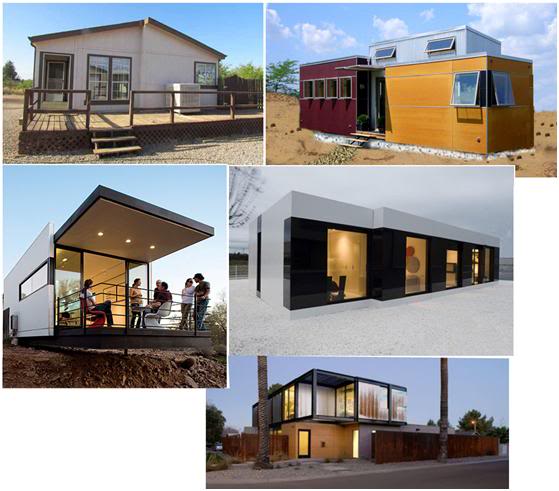 Figure 1: Some of the homes on the 150 acre campus of the Alcor-B facility in Mobile, AZ that house Alcor-B staff, as well as Alcor-B members.
Figure 1: Some of the homes on the 150 acre campus of the Alcor-B facility in Mobile, AZ that house Alcor-B staff, as well as Alcor-B members.
Many of those present have come in part, to establish legal residency, because the following November, Mobile will elect its local government, become independent of neighboring Goodyear, and incorporate. It will thus become the first legally recognized community operated by, and largely for cryonicists. If growth and revenues permit, it will then begin offering its citizens the full range of municipal services, including fire protection and policing.
Mobile was on the verge of becoming a boom town before the economic collapsed in 2007. A tiny town with little going for it but its proximity to Phoenix, its geological stability and its ample ground water stores, Mobile was to have been the site of a self-sustaining community of ~ 50,0000 people, with a regional mall and the full range of master-planned community amenities. Unfortunately, Amaranth, as the development was to be called, was a casualty of the economic meltdown, and the 10,200-acre tract which was approved for a mixed used community of 42,000 residences and a range of other uses, including 1,600 acres of commercial and 700 acres of industrial development, went into foreclosure in 2009.
Taking advantage of the extensive investment already made in the planning and zoning process, Alcor-B purchased a 150 acre parcel adjacent to State Route 238. Our story continues from there…
Introduction & Tour of the Alcor-B Foundation’s Mobile, Arizona Patient Care Facility & Existential Colony
Address given to Alcor-B Foundation Cryopreservation Members and Staff on 15 September, 2012 By Gorton Carpenter, M.D., Ph.D., President of the Alcor-B Foundation
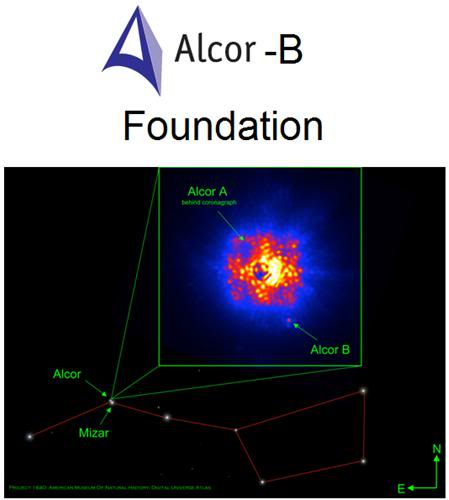 Figure 2: The Alcors are the second, smaller and dimmer companion stars to Mizar, the bright stars that comprise the crook in the handle of the Big Dipper constellation. In the Arab world of the 5th Century CE, Mizar’s much less bright (and more difficult to see) companion stars, Alcor-A and Alcor-B were used as tests for good vision. Only someone with the clearest and most acute visions could see the Alcor’s. Alcor-B was discovered early in 2011 using Project 1640m, which makes use of the Hale Telescope’s adaptive optics system. Project 1640 gives the Hale a view almost equal to what is possible in space. The instrument also has the ability to block out the light of a star, allowing faint objects located next to a star to be seen. The Hale, armed with Project 1640, was pointed at Alcor earlier this year and found that it isn’t a single star. Alcor has a small stellar companion that hadn’t been seen before: Alcor-B, a small, dim red dwarf star about one fourth the mass of our Sun. To see Alcor-B you must have the superior vision that only mastery of the most sophisticated technology allows. Alcor-B is thus a test for the clearest and most acute vision – vision capable of seeing things as they really are – not just as they appear to be.
Figure 2: The Alcors are the second, smaller and dimmer companion stars to Mizar, the bright stars that comprise the crook in the handle of the Big Dipper constellation. In the Arab world of the 5th Century CE, Mizar’s much less bright (and more difficult to see) companion stars, Alcor-A and Alcor-B were used as tests for good vision. Only someone with the clearest and most acute visions could see the Alcor’s. Alcor-B was discovered early in 2011 using Project 1640m, which makes use of the Hale Telescope’s adaptive optics system. Project 1640 gives the Hale a view almost equal to what is possible in space. The instrument also has the ability to block out the light of a star, allowing faint objects located next to a star to be seen. The Hale, armed with Project 1640, was pointed at Alcor earlier this year and found that it isn’t a single star. Alcor has a small stellar companion that hadn’t been seen before: Alcor-B, a small, dim red dwarf star about one fourth the mass of our Sun. To see Alcor-B you must have the superior vision that only mastery of the most sophisticated technology allows. Alcor-B is thus a test for the clearest and most acute vision – vision capable of seeing things as they really are – not just as they appear to be.
Some History & Background
 Figure 3: Alcor-B President, Gorton Carpenter, M.D., Ph.D.
Figure 3: Alcor-B President, Gorton Carpenter, M.D., Ph.D.
Before I get started with the formal part of today’s program, I want to take the opportunity to thank each and every Alcor-B member who has come here, today. I especially want to thank those of you who have come from Southern California. I know that many of you lost property, and in some cases your homes, and even family and friends in the Big One, not two months ago. It is an extraordinary testament to your dedication that you are here today.
And to all of you, without your support over the past 40 years, what we are all about to experience today would not have been possible.
On this day forty years ago, Fred and Linda Chamberlain founded the Alcor Foundation for Solid State Hypothermia from their home in a suburb of Los Angles, near the Jet Propulsion Laboratory (JPL), where Fred Chamberlain was then employed as an electrical engineer working on the Mariner-Jupiter-Saturn’77 (MJS’77) spacecraft.
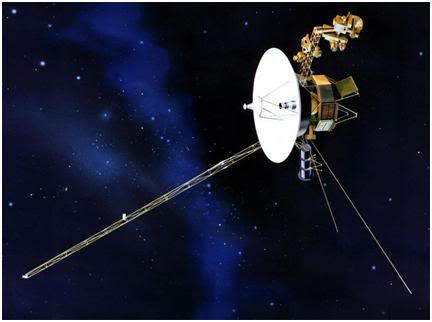 Figure 4: Conceived in the 1960s, a Grand Tour proposal to study the outer planets prompted NASA to begin work on a mission in the early 1970s. The development of the interplanetary probes coincided with an alignment of the planets, making possible a mission to the outer Solar System by taking advantage of the then-new technique, gravity assist. Utilizing gravity assists would enable a single probe to visit the four gas giants (Jupiter, Saturn, Uranus, and Neptune) while requiring a minimal amount of propellant and a shorter transit duration between planets. Originally, Voyager 1 was planned as Mariner 11 of the Mariner program however, due to congressional budget cuts, the mission was scaled back to be a flyby of Jupiter and Saturn, and renamed the Mariner Jupiter-Saturn probes. As the program progressed, the name was later changed to Voyager as the probe designs began to differ greatly from previous Mariner missions. [ http://history.nasa.gov/SP-4219/Chapter11.html]
Figure 4: Conceived in the 1960s, a Grand Tour proposal to study the outer planets prompted NASA to begin work on a mission in the early 1970s. The development of the interplanetary probes coincided with an alignment of the planets, making possible a mission to the outer Solar System by taking advantage of the then-new technique, gravity assist. Utilizing gravity assists would enable a single probe to visit the four gas giants (Jupiter, Saturn, Uranus, and Neptune) while requiring a minimal amount of propellant and a shorter transit duration between planets. Originally, Voyager 1 was planned as Mariner 11 of the Mariner program however, due to congressional budget cuts, the mission was scaled back to be a flyby of Jupiter and Saturn, and renamed the Mariner Jupiter-Saturn probes. As the program progressed, the name was later changed to Voyager as the probe designs began to differ greatly from previous Mariner missions. [ http://history.nasa.gov/SP-4219/Chapter11.html]
Figure 5: Fred and Linda Chamberlain at the turn of the 21st century.
If that name doesn’t ring a bell, it’s probably because MJS’77 was ultimately renamed Voyager (1 & 2)[1] – the spacecraft that are, even as I am speaking here, crossing the heliopause and leaving our solar system.[2] Fred’s mind and Fred’s hands were in charge of crafting the Voyager Sun Sensor and Canopus Trackers which guided, and still guide, the Voyager spacecraft on their flights. Today, the existence of the paper records of those efforts is in question. With the 8.4 earthquake 7 weeks ago due to the rupture of the San Andreas Fault east of San Diego towards San Bernardino, the Jet Propulsion Laboratory sustained major damage. It is thus not yet known if a nondescript series of boxes occupying 3.1 cubic feet, and which are labeled “JPL 67,” have survived the quake. Those boxes contain the files documenting Fred’s achievements with the Voyager sensors.
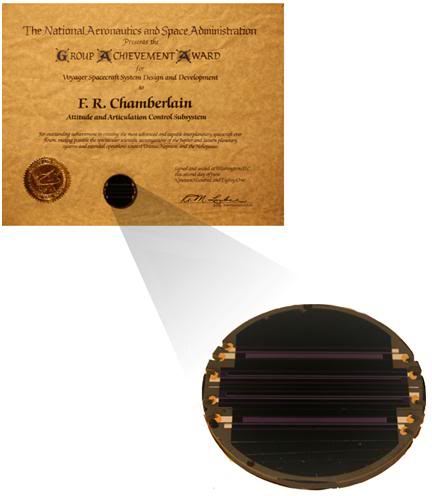 Figure 6: Certificate awarded to Fred Chamberlain for his outstanding work on the Voyager Sun Sensor and Canopus Trackers. The certificate contains one of the unused sensor elements. [Images courtesy of Fred Chamerlain, III.]
Figure 6: Certificate awarded to Fred Chamberlain for his outstanding work on the Voyager Sun Sensor and Canopus Trackers. The certificate contains one of the unused sensor elements. [Images courtesy of Fred Chamerlain, III.]
The other record of his achievements is more secure and will undoubtedly be more enduring. That record exists in the physical embodiment of his labors, which are now on their way to the stars in the form of the four Voyager Sun Sensor and Canopus Trackers (there were two per spacecraft). At the same time Fred was working to expand humanity’s understanding of, and dominion over the cosmos in an unprecedented way, he and Linda were also working full time to facilitate our conquest of death and of time. The creation of Alcor-B, and the cryopreservation of its first patient, Fred Chamberlain, Jr., Fred’s father, who is with us here, today, are in fact, the vastly more impressive, and we hope the vastly more enduring legacy of the Chamberlains’ efforts.
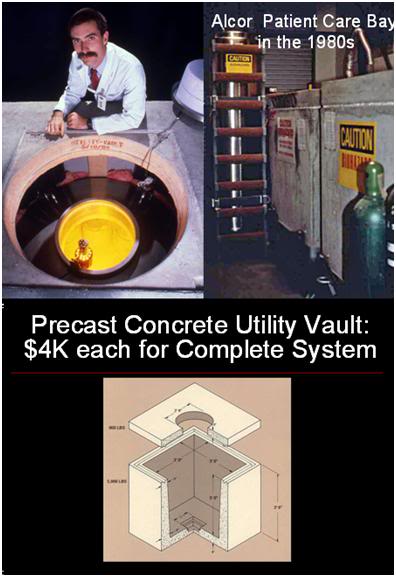 Figure 7: The first Alcor-B hardened patient protection structures were put in place in 28 years ago when Alcor-B had only 5 patients.[3]
Figure 7: The first Alcor-B hardened patient protection structures were put in place in 28 years ago when Alcor-B had only 5 patients.[3]
From the earliest days of Alcor-B, the Chamberlains, and those who followed them in leading us, were concerned about the long-term safety and security of Alcor-B’s patients, and of the staff who care for them. As early as 1974, the Chamberlains and former Alcor-B President Mike Darwin, made the journey to an abandoned Titan-1 missile site near Yuba City, CA in order to better understand the kind of infrastructure that would be required to shield Alcor patients and staff from the possibility of catastrophic, existential events, such as the one still unfolding in Los Angeles, today.
That trip, and those insights gained from it, was instrumental in the creation of the first system to protect patient patients from loss due to catastrophic, existential events. At that time, Alcor patients were housed in facilities that were in the same seismic risk zone where the San Andreas Fault ruptured a few weeks ago. They were also at risk from fire, because the first two facilities Alcor-B occupied were not sprinklered, and even sprinklered buildings are at risk of fire in the event of a major earthquake (due to the likelihood of the disruption of the municipal water supply). The Alcor-B neuropatient vault was the prototype for the level of protection intended for all Alcor-B patients (Figure 7).
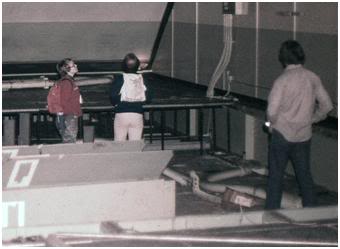 Figure 8: Linda (L) and Fred (R) Chamberlain in the Control Room dome of the Titan-1 facility near Yuba City, CA in 1974.
Figure 8: Linda (L) and Fred (R) Chamberlain in the Control Room dome of the Titan-1 facility near Yuba City, CA in 1974.
Forty years ago, Alcor-B consisted of only a handful people, and when the trip to the Titan-1 site was made, the situation was little better. The idea that we would one day have the kind of infrastructure that it took the US government well over a billion of today’s dollars to construct must have seemed impossible. Thirty eight years have come and gone since that intrepid band of cryonics pioneers made their way through the carcass of that Cold War death star (Figure 8). In that interval, technology has advanced dramatically, particularly the technology of mass destruction. The side effects, or more accurately the adverse effects of our overall technological advance, have also become more apparent, and more pressing. The impact of climate change on the world food supply, and thus on the world’s economic and political stability, is becoming of increasing concern. What’s more, the vast expansion of economic irresponsibility and indebtedness that advances in computing and automated manufacturing have enabled, are creating an increasingly unstable and unsafe environment, both here and abroad. And finally, the presence of 7 billion people on this planet, many living in abject poverty under conditions that can only be described as incubators for pandemic disease, greatly increases the risk of a global catastrophe.
 Figure 9: Economic destabilization, overpopulation and climate change appear to be interacting to greatly increase the risk of an impending global existential crisis.
Figure 9: Economic destabilization, overpopulation and climate change appear to be interacting to greatly increase the risk of an impending global existential crisis.
For these and many other reasons, fifteen years ago Alcor-B made a definitive commitment to harden our patient care and staff facilities against existential risks. This commitment was consistent with our long-standing program of saving and investing capital to serve as a defense against contingent risks, as embodied in the 10% Rule.[1] In 1993 a working group was quietly established not just to study this problem, but to solve it. Their detailed recommendations were then molded into a plan, the realization of which you are about to experience today. In 2007, with the start of the current economic depression, the working group identified a property in Mobile, AZ as potentially ideal. Confidential negotiations were then undertaken with the city of Goodyear, AZ (which is responsible for the governance of Mobile) to ensure that Alcor-B would be welcome here. With the favorable conclusion of those negotiations, the 150 acre Mobile property was acquired, and construction was begun in mid-2008.
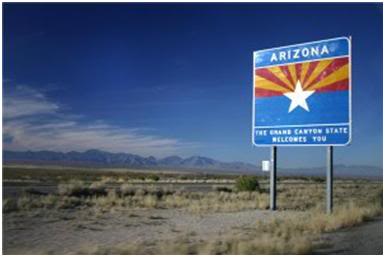 Figure 10: The Mobile, AZ land parcel. as seen from State Route 238.
Figure 10: The Mobile, AZ land parcel. as seen from State Route 238.
The years of careful planning, and detailed design and technological projections have paid off handsomely. Construction finished two months ago, 6 weeks ahead of schedule and $250,000 under budget. We sit here today in this ‘surface terminator’ much as a gull sits atop an iceberg. This structure, attractive and impressive as it is, is but the tip of an iceberg of hardened infrastructure which you will shortly be seeing for yourself, firsthand. But before we depart from here and descend to the subterranean parts of this facility, I’d like to take a few minutes to acquaint you with what you will see – and with some of what you will not see; because it is buried in the earth, and not visible to any human eyes. And of course, I’d like to very briefly acquaint you with “the how” and “the why” of the decision making involved in realizing this project.
Defining Need, Scope and Urgency
 Figure 11: “We should be dead, but we aren’t. The goal is to walk so far ahead that the arrows can’t reach us anymore. And then, maybe, we can begin pulling some of them out.” – Beverly Rubik
Figure 11: “We should be dead, but we aren’t. The goal is to walk so far ahead that the arrows can’t reach us anymore. And then, maybe, we can begin pulling some of them out.” – Beverly Rubik
It may be that the greatest problem that confronts cryonics is the absence of existential actuarial risk data, and indeed, the absence of long term data about many things that only people who are attempting to step across the centuries, need be concerned with. What we share with the geographical pioneers of the preceding millennia is uncertainty, not just about the known risks, but also about those we have little, if any way to anticipate. And we all know that one working definition of a pioneer is a man with arrows in his back. However, my guess is that very few people know the next part of that quote by Beverly Rubik: “The weak fall against the arrows, but the greats have, against all odds, continued to walk forward with at least a dozen arrows stuck in their backs. They should be dead, but they aren’t… The goal is to walk so far ahead that the arrows can’t reach you anymore. And then, maybe, you can begin pulling some of them out.” That’s a pretty fair synopsis of the position we cryonicists are in (Figure 11). What we have attempted to do here in Mobile is to at least get far enough head that the arrows can’t reach us anymore.
How do we know how to weight the risks that we know confront us, and how can we possibly know how to evaluate the risks we can’t yet foresee? Our first step was to generate a comprehensive list of the known existential and other risks, and then do extensive research on the probability we will encounter them over given intervals of time. We also needed to know what the likely costs of defending against them would be. One of the first things we learned from this effort was that risk, like compound interest on debt, does not accumulate linearly. As a consequence, ‘risk exposure time’ has a very corrosive effect on the chances of our success over a period of many decades, let alone centuries. This initial effort, begun 25 years ago, led to the development of the Timeline to Recovery Project (TRP) in 1995: a sophisticated mathematical model designed to track and project the rate of technological advance, and to regularly update our assessment of risks that could threaten the safety and security of our patients in storage. In the 17 years since TRP became functional, we have been continually updating our databases and refining our projections in order to allow for meaningful, and truly long-term planning, to protect the patients in our care.
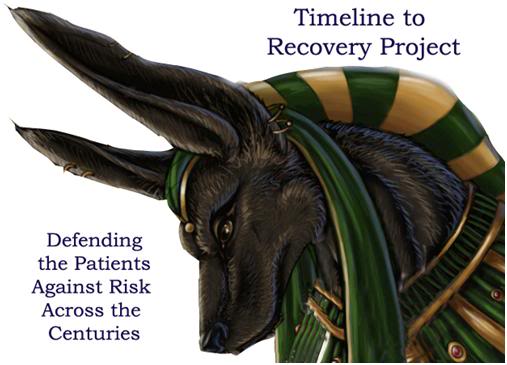 Figure 12: The Timeline to Recovery Project (TRP) began as an exercise to attempt to define the likely time course for the revival of various cohorts of Alcor-B patients, based upon the extent of ischemic and cryopreservation injury they are believed to have experienced. The TRP, whose symbol is Anapa (Anubis, the protector of the deceased and their tombs, in ancient Egypt) has become the principal defensive arm of Alcor-B in protecting the safety of its patients.
Figure 12: The Timeline to Recovery Project (TRP) began as an exercise to attempt to define the likely time course for the revival of various cohorts of Alcor-B patients, based upon the extent of ischemic and cryopreservation injury they are believed to have experienced. The TRP, whose symbol is Anapa (Anubis, the protector of the deceased and their tombs, in ancient Egypt) has become the principal defensive arm of Alcor-B in protecting the safety of its patients.
Until 2007, the numbers generated by the TRP Model and the TRP working group did not change much. They remained consistent with the numbers returned when we began this extensive survey program of this civilization’s broad spectrum technological advance. The quarterly TRP evaluations fairly consistently indicated that the earliest Alcor-B patients faced a probability of remaining in cryopreservation for (from 2007) ~200±25 more years, providing, of course, that progress continued at its current pace. However, for the last 18 quarters, the TRP projections for time in storage have been steadily increasing, initially for patients in the first cohort of injury, and much more disturbingly, over the past 9 quarters, for all patient cohorts. This is due to a marked slowing in the pace of technological advance.
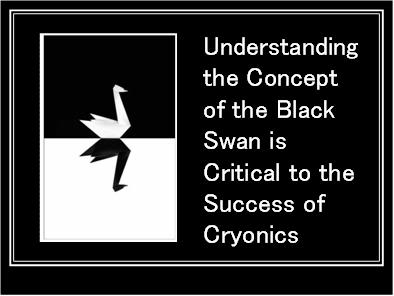 Figure 13: Black Swan Theory” calls attention to unexpected events of large magnitude and consequence and their dominant role in history. Such events, considered extreme outliers, collectively play vastly larger roles than regular occurrences. While Black Swan Theory has important implications, even for people living a currently normal lifetime of 75-100 years, its implications become more important when planning or carrying out undertaking that must continue, uninterrupted, across centuries.[4, 5] See also: http://papers.ssrn.com/sol3/papers.cfm?abstract_id=1864633
Figure 13: Black Swan Theory” calls attention to unexpected events of large magnitude and consequence and their dominant role in history. Such events, considered extreme outliers, collectively play vastly larger roles than regular occurrences. While Black Swan Theory has important implications, even for people living a currently normal lifetime of 75-100 years, its implications become more important when planning or carrying out undertaking that must continue, uninterrupted, across centuries.[4, 5] See also: http://papers.ssrn.com/sol3/papers.cfm?abstract_id=1864633
The TRP core and advisory groups consist of some of the brightest and most capable minds committed to cryonics assembled anywhere on the planet. They are economists, scientists from half a dozen disciplines, statisticians, mathematicians, and businessmen who have made their mark in diverse enterprises by becoming millionaires many times over. The consensus of the combined TRP working and advisory groups for the proximate cause of the observed technological slowdown was not surprising, and that was that it is a direct result of the economic depression we are still struggling through.
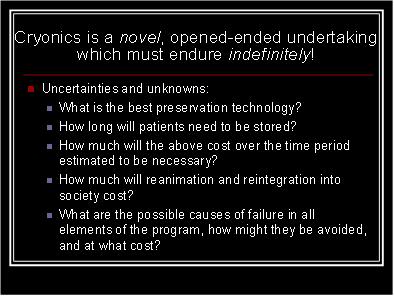 Figure 14: Some of the key factors considered by the Timeline to Recovery Groups in creating mathematical models for the time course to the reanimation of cryonics patients, as well as for the existential and other risks during the projected time interval.
Figure 14: Some of the key factors considered by the Timeline to Recovery Groups in creating mathematical models for the time course to the reanimation of cryonics patients, as well as for the existential and other risks during the projected time interval.
What is surprising was the broadly shared consensus of both groups, that the economic woes we are and have been experiencing since 2007, are a likely (p= 0.05) a reflection of much deeper problems which are not likely to be resolved soon, and which may be the harbinger of a genuine existential crisis. Population growth, climate change, and gross fiscal irresponsibility in the public and private sector on a heretofore unprecedented scale, may precipitate geopolitical and human catastrophes of increasing magnitude in the coming decades. Under the most favorable analysis, the global infrastructure of this civilization is deemed so fragile that any major stressor, such an outbreak of global pandemic disease, a multinational military conflict with an economic impact in the multiples of trillions of dollars, or a conflict involving nuclear or biological weapons of mass destruction, would almost certainly have the potential to create rationing or the disruption in supply of the materiel essential to the continued care of Alcor-B’s patients, including liquid nitrogen. If this analysis is correct, then it is even more urgent that Alcor-B be prepared.
While I am getting ahead of myself here, I would be inexcusably remiss if I didn’t pay homage and offer thanks to the Wainwright Family, not only for their generous contribution of $950,000 for the surface terminator to this facility, but for their selection of Robert Konieczny of KWK Promesas, the architect of this most unusual building.
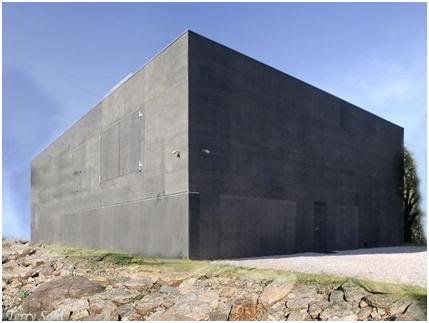
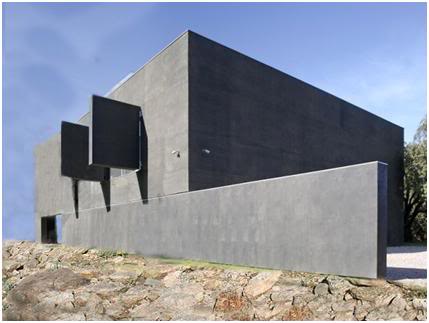
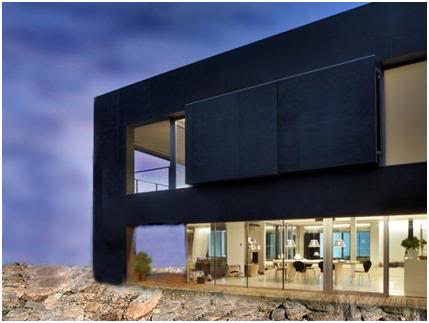
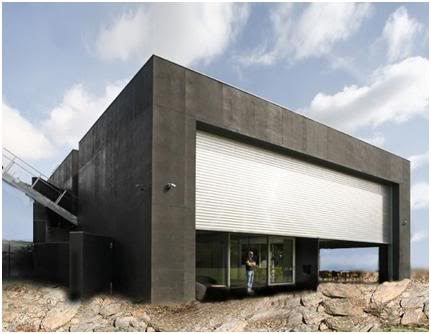
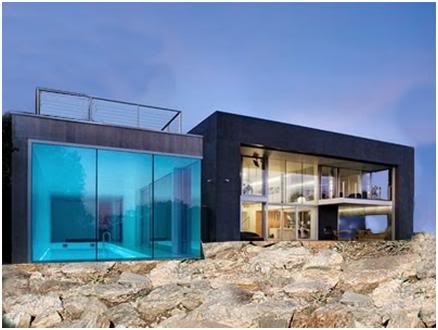 Figure 15: The Alcor-B Facility surface terminator, which the staff affectionately call the “friendly fortress.”
Figure 15: The Alcor-B Facility surface terminator, which the staff affectionately call the “friendly fortress.”
The Friendly Fortress (FF) is a steel-reinforced concrete building that is blast-resistant and impervious to conventional ballistic assault. It is not designed to withstand grave existential events, such as a full-on nuclear, biological or chemical or assault NBC). Although it is equipped with and NBC air handling system. Rather, its purpose is to provide temporary shelter, and allow for adequate deployment of the fully hardened, below-ground structures that comprise the rest of the facility. The design of this building is also a testament to the durability of our institutional memory. We have not forgotten the SWAT Team raid on Alcor-B in 1987, and the good advantage conferred by the fortress-like structure of the Alcor-B building in Riverside, CA. We remain ever aware that we are indeed pioneers, and that we can come under attack due to ignorance or misunderstanding at any time, and that it pays to be prepared.
When its armored petals are opened, the FF is a glowing and welcoming structure that houses conference and dining facilities, as well as some of Alcor-B’s administration. Adjoining the FF is a natatorium with an Olympic sized pool – something the Wainwright Family insisted be available for guests and staff, as part of their commitment to low-impact fitness. Beyond its purely functional nature, the FF will serve as a powerful statement to the media, and to prospective members, of both Alcor-B’s philosophy, and of its commitment to defend and care for its patients. I think you will be able to feel both of those things as you wander around this structure today. And with that, let us take a break and enjoy the refreshments that await us in the Phoenix Dining Room.
End of Part 1
Footnotes
[1] The 10% Rule was enacted by the Alcor-B Board in 1982 and stipulates that 10% of Alcor-B’s gross income must be placed in the Patient Care Trust to provide for contingent risks and for emergency relocation of the patients should that become necessary.
References
1. Butrica AJ (ed.): Chapter 11: Voyager: The Grand Tour of Big Science: http://history.nasa.gov/SP-4219/Chapter11.html: NASA; 1998.
2. NASA: Today’s Voyager spacecraft distances and speeds, along with a graphical representation go to http://heavens-above.com/solar-escape.asp?/. 2011.
3. Darwin M: Cephalarium vault arrives. Cryonics 1984(53):1.
4. Taleb N: Fooled by Randomness: The Hidden Role of Chance in the Markets and in Life. In. New York: W. W. Norton; 2001.
5. Taleb N: The Black Swan: Second Edition: The Impact of the Highly Improbable: With a new section: “On Robustness and Fragility”. In. New York: Random House Trade Paperbacks; 2010.
